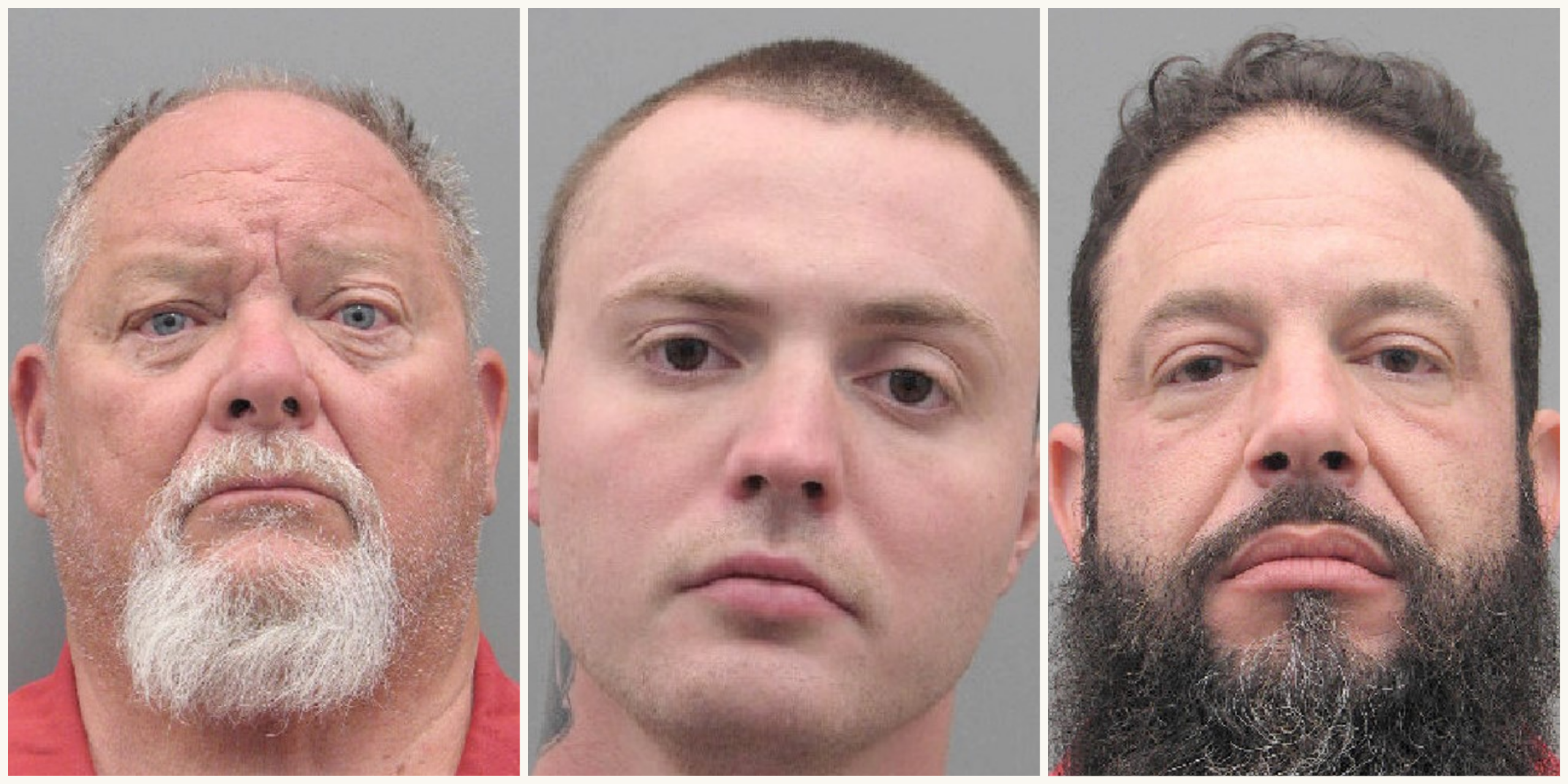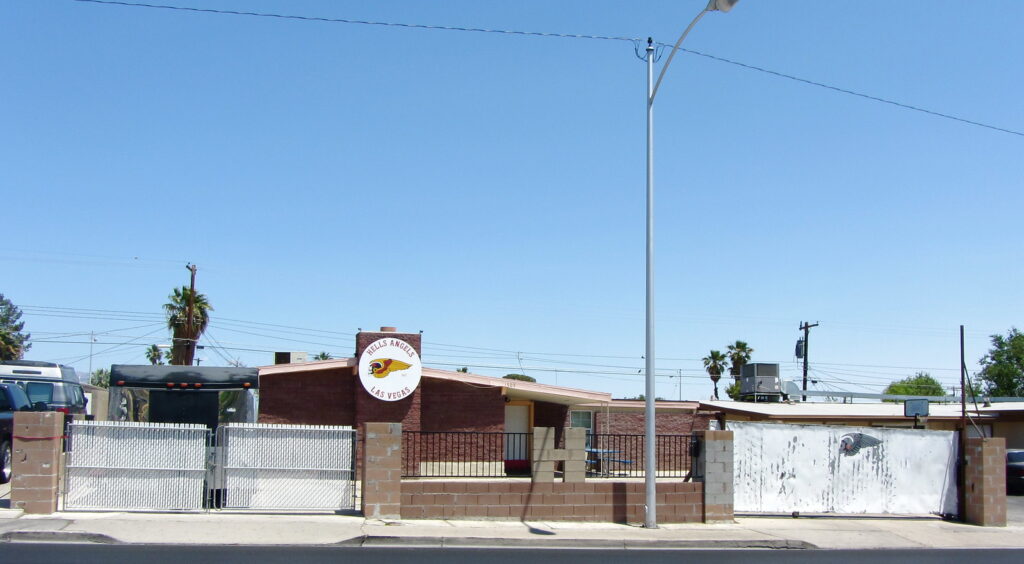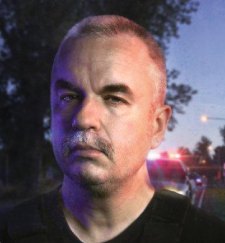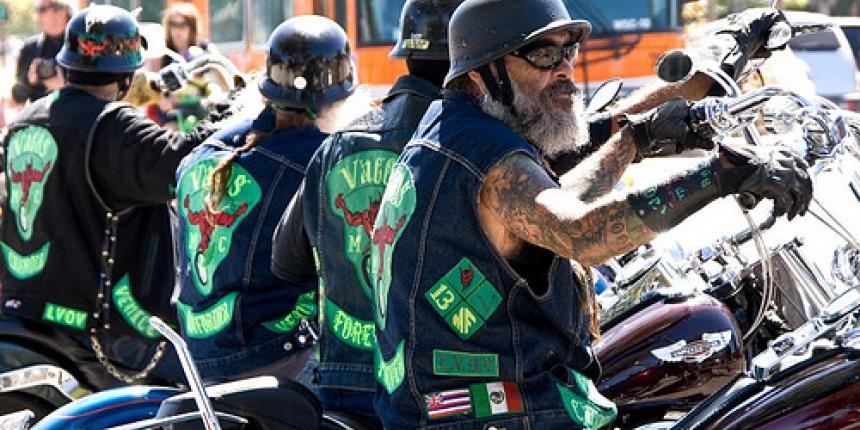Three charged in Hells Angels shooting of rival Vagos riders during Memorial Day weekend
Outlaw motorcycle gang fracas near Las Vegas sends six Vagos members to hospital

It was supposed to be a peaceful motorcycle ride near Hoover Dam in honor of America’s war dead, followed by a trip to a veterans cemetery in Boulder City, Nevada.
Members of the Vagos, an outlaw motorcycle gang with a history of violence, were clustered together driving on U.S. 95 in the Las Vegas suburb of Henderson on Sunday, May 29, when three men affiliated with the rival, equally violent Hells Angels gang followed them on their bikes and then fired shots, injuring six Vagos.
The attack happened after three men, a mix of current and prospective Hells Angels, trailed the Vagos who were riding as part of the Flags Over Dam motorcycle event that morning outside Hoover Dam and on to the Veterans Memorial Cemetery, where people gathered in tribute to fallen members of the U.S. military during the Memorial Day weekend.
Authorities have not yet released, or determined, what triggered the one-sided shooting. The Vagos apparently did not fire any shots before or during the assault.
Three suspects, Richard Devries, 66, Stephen Alo, 46, and Russell Smith, 26, were arrested and charged with attempted murder, murder conspiracy, battery with a deadly weapon and discharging a firearm into a vehicle.
Devries is president of the Las Vegas chapter of the Hells Angels.

HELLS ANGELS MAY HAVE TAKEN THE OPPORTUNITY TO STRIKE
Steve Cook, a motorcycle gang expert and executive director of the Midwest Outlaw Motorcycle Gang Investigators Association, based in Kansas City, Missouri, said the Hells Angels and Vagos have had a longstanding violent feud and the Angels in this case may have decided, “we have an opportunity here, let’s take it.”

“The Angels are the Rolls-Royce of outlaw motorcycle gangs,” Cook said. “Everyone wants to be them, but everyone hates them. They’re wealthy, they have legend status with the public.”
Lately, Cook said, the well-known biker gang has had to battle not only the Vagos, but other top motorcycle gangs such as the Mongols and Pagans “on both coasts” and the Outlaws, who “are a big problem for them.”
“The Angels are getting pushed around a lot, especially out in Nevada,” he said. “They are basically fighting on a number of fronts. They are fighting a majority of the biker gangs in the country. The other gangs look at them, and say, ‘Yeah, let’s go after them.’”
In this case, Cook said the group of Angels may have not expected to see the Vagos on Memorial Day weekend, but “they operate in [a] thought process that can be violent. …You’ve also got to be in an offensive position, especially in a competitive place like Las Vegas.”
The casual use of methamphetamine, a common drug among biker gangs, may also have affected their judgment, Cook said.
A possible rationalization in their minds to go through with the violent altercation is the belief that witnesses might be too squeamish to testify and “the prosecution’s case will collapse anyway,” he said.
PROSPECTIVE MEMBERS RODE WITH HELLS ANGELS
According to Henderson Police, the morning of the shooting, five prospects seeking admission as members to the Hells Angels pursued the group of Vagos to the veterans cemetery in Boulder City. The gang candidates began to cause problems, unspecified by police, for the Vagos inside the confines of the cemetery.
The prospects then motored out of the cemetery 15 to 20 minutes before the Vagos left to drive toward Henderson. The Vagos cruised side by side northbound in the first lane of U.S. 95 near Wagon Wheel Drive. After the Vagos passed Wagon Wheel, a number of Hells Angels members and prospects were seen approaching in lanes three and two as the Vagos riders remained in lane one.
The Hells Angels members and prospects drove up to the Vagos and started to kick them, attempting to knock them down onto the freeway. Then one of the Hells Angels allegedly stood up on his cycle, pulled a gun and opened fire on one of the Vagos riders, later identified as Alejandro Castillo. After firing, the Hells Angels gunman drove off northbound on U.S. 95. Nevada State Police received a call about the shooting at 11:50 a.m.
Other Vagos injured in the gunplay included Ricardo Velasquez, Carie Chapin, Michael Stasiewicz, Michael Lempart and Chad Merrill. All were transported to Sunrise Hospital and Medical Center in Las Vegas. In their condition, the victims were only able to provide limited information to detectives.
Police officers picked up a number of empty shell casings from the northbound roadway, between the College Drive and Horizon Drive exit ramps.
Just before the gunfire, an anonymous witness heading north on U.S. 95 phoned 911 to report seeing a number of Hells Angels parked on the side of the freeway looking as if they were waiting.
The witness took a video showing a fully patched Hells Angels member and three gang prospects riding alongside the Vagos members. One of the prospects, on a black motorcycle, wore only the bottom half of a gang logo patch, with red lining at the bottom of the vest, and tan pants and red shoes. The rider’s arms were covered in tattoos and he was holding his left arm down with an “item” in his hand, police reported. The rider passed the witness, rode toward an additional motorcyclist and then the witness heard the gunshots.
Boulder City Police soon learned that several Hells Angels had been inside the Coffee Cup café in Boulder City before the shooting. A Las Vegas Metropolitan Police intelligence detective and a sergeant arrived at the café and viewed surveillance footage showing four Hells Angels associates there about 9 a.m.
Metro intelligence officers recognized one of them as Richard “Rizzo” Devries, Las Vegas chapter president. With Devries was Stephen Alo, a prospective member who was wearing a black vest with a red lining on the bottom and no sleeves, plus tan pants and red shoes and his arms fully tattooed. Also present were two other prospects, Aaron Chun, wearing a black vest and dark pants, and Russell Smith, who had on a black vest with black sleeves, black pants and white Nike shoes.
From the surveillance video at the café and the witness’s video from the freeway, police identified Smith as the male with the tattoos on both arms, wearing a black vest, tan pants, red shoes and a white helmet who held something in his left arm. Metro intelligence detectives recognized the Hells Angels man with the fully patched vest, riding a black motorcycle, as Devries.
The detectives viewing Boulder City Police dashboard video saw some suspected Hells Angels riding westbound on U.S. 93 leaving Boulder City before the call about the shooting. A detective identified Devries, Alo and Smith on the video. Devries rode first, followed by Smith and Alo riding together.
Later that evening, Metro detectives wrote search warrants for Devries, Alo and Smith and confirmed their home addresses. Henderson and Las Vegas police watched Alo leave his home.
Las Vegas intelligence detectives traced Alo’s mobile phone to a cell signal site in the area of U.S. 95 and College Drive near the time of the gunshots. Cell sites also placed Smith’s mobile phone in the area of U.S. 95 and the I-215 freeway north of the shooting location, just after the shots were fired, and earlier at the Coffee Cup café.
Henderson Police arrested and booked the three men early Monday on six counts each of alleged attempted murder, conspiracy to commit murder, battery with a deadly weapon and discharge of a firearm into a vehicle. On Tuesday, they were formally charged. Police added gang enhancements against Devries, which could mean more years in prison if he is found guilty.
The prospects riding with Devries likely were those asked to join the Angels gang and served a preliminary “hang around” designation – fulfilling mundane chores such as guarding bikes outside a bar – for about six months, and then might receive a rectangular bottom partial “rocker” Angels patch to wear on their riding vest, Cook said.
After the prospect serves about a year with the gang, the Angels chapter decides if the person has the qualities to become a member, and takes a vote on him joining. If the person wins, the gang awards him the top rocket vest patch, reading “Hells Angels,” the gang’s signature death’s head symbol in the center and the name of their state on the bottom, and perhaps a rocket patch of the side naming their city of membership.
Cook said he believes “there will be retaliation by the Vagos” against the Hells Angels over the Henderson shooting.
HUNDREDS OF OUTLAW MOTORCYCLE GANGS
The U.S. Justice Department as of 2021 logged more than 300 outlaw motorcycle gangs (OMG) across the county, “ranging in size from single chapters with five or six members to hundreds of chapters with thousands of members worldwide,” according to the agency’s website.
The leading gangs mentioned by the department include the Hells Angels, Vagos, Mongols, Bandidos, Outlaws, Sons of Silence, Black Pistons and Pagans.
Most of the criminal acts committed by OMGs include drug smuggling, in particular across the U.S.-Mexico border, in conspiracies with major international drug trafficking organizations.
The Hells Angels, formed in San Bernardino California, in 1948, have at least 800 members in 92 chapters in 27 states, according to the Justice Department. The gang’s illegal activities include trafficking marijuana, methamphetamine, cocaine, hashish, heroin, LSD and ecstasy, and committing assaults, extortion, murders, money laundering and motorcycle theft.
Justice did not mention Hells Angels chapters located outside the United States. The gang’s own website claims to have 467 chapters in 59 countries on five continents.

The Vagos, started in 1965 in San Bernardino, maintains about 300 members in California, Hawaii, Nevada, Oregon and Mexico, the Justice Department estimated. The gang is known to produce and distribute methamphetamine, sell illegal marijuana and engage in assaults, extortion, insurance fraud, money laundering, vehicle theft, witness intimidation and weapons violations.
Several decades ago, the American Motorcyclist Association asserted that less than one percent of motorcyclists belong to outlaw motorcycle gangs. The outlaw clubs subsequently embraced this phrase, describing themselves as “one percenters.”
The Hells Angels and Vagos have participated in many shootings with opposing gangs over the years.
In September 2011, Vagos member Ernesto Gonzalez shot Jeffrey Pettigrew, president of the Hells Angels chapter in San Jose, California, four times in the back during a brawl on a dance floor at John Ascuaga’s Nugget hotel-casino in Sparks, Nevada. The next day in Sparks, two Vagos members were shot and wounded.
In a major legal case against the Vagos, including the 2011 Nugget casino killing, federal prosecutors in Las Vegas charged eight members with violations under the Racketeer Influenced and Corrupt Organizations (RICO) Act, including murder, drug dealing, robbery, extortion and kidnapping. The crimes were allegedly committed in California, Nevada and four other states going back to 2005. However, the case foundered and a judge dismissed the charges in 2020.
In 2002, Laughlin, Nevada, was the setting for a biker gang shootout involving the Hells Angels and Mongols. Two Hells Angels were shot to death, and one Mongol was stabbed to death. Six Hells Angels and six Mongols went to prison stemming from the confrontation.
Feedback or questions? Email blog@themobmuseum.org





